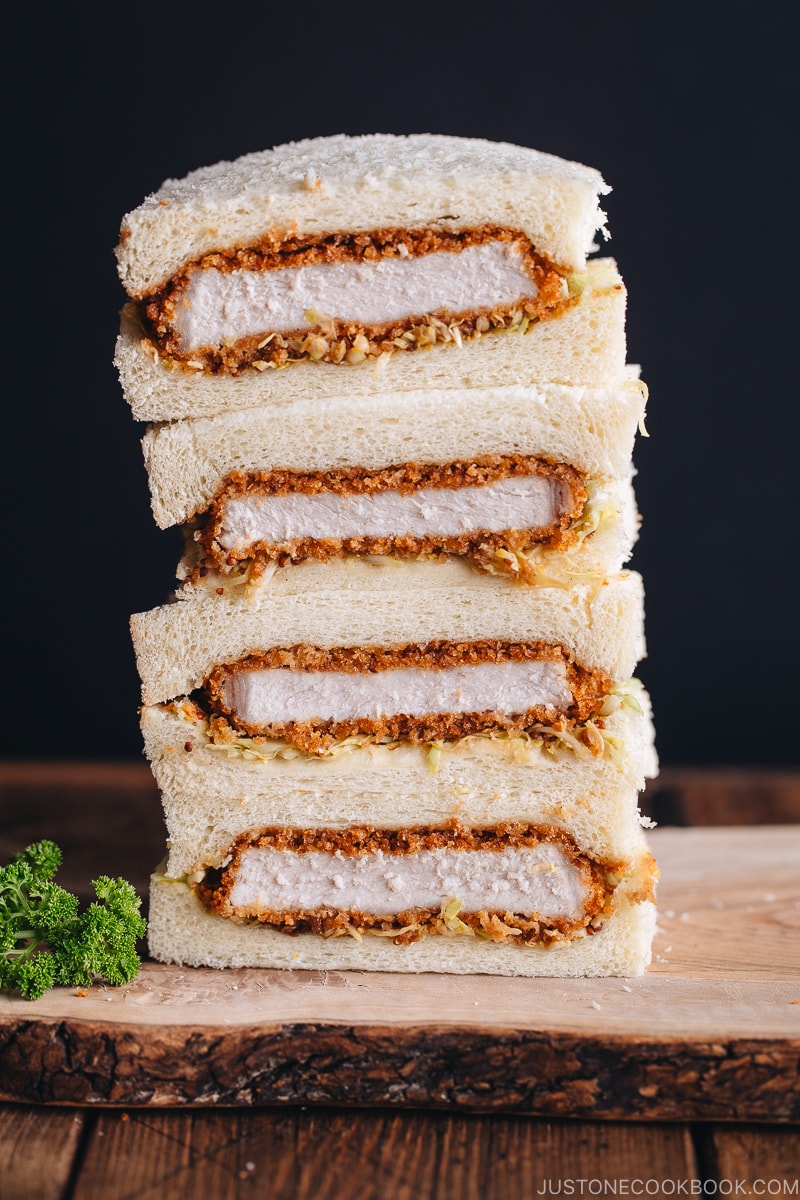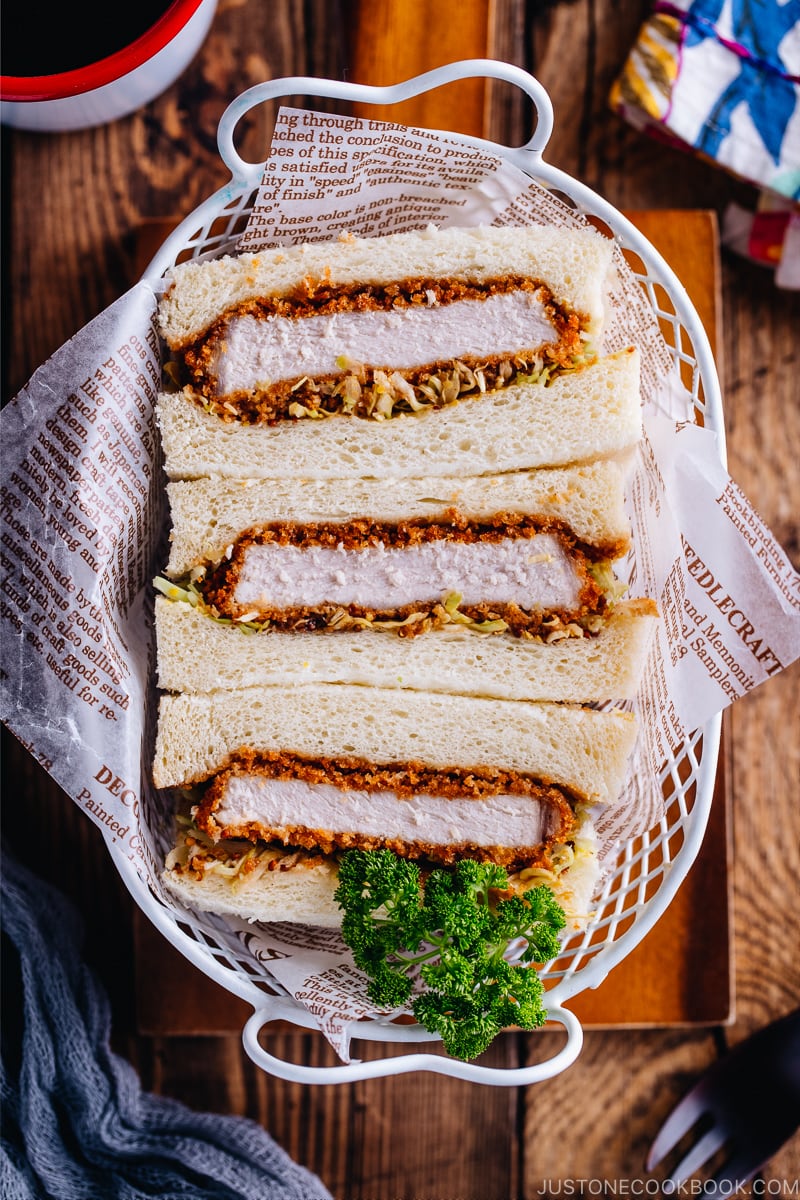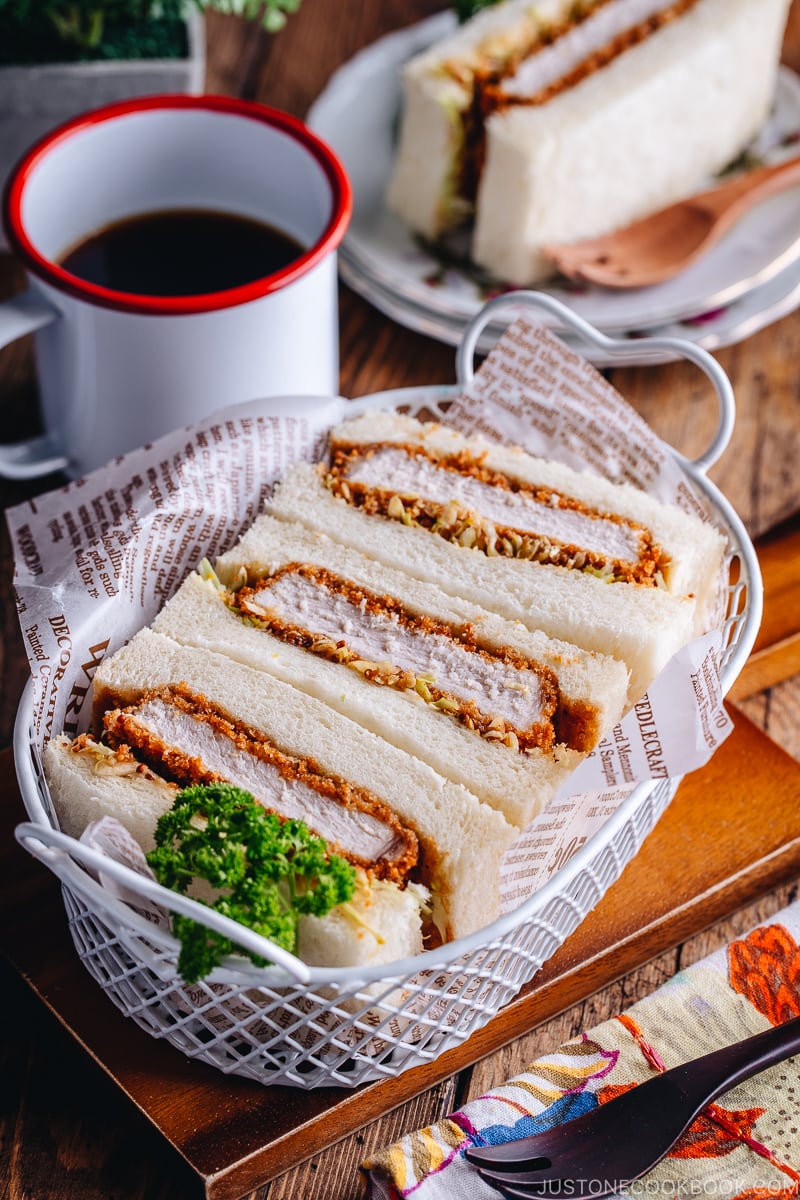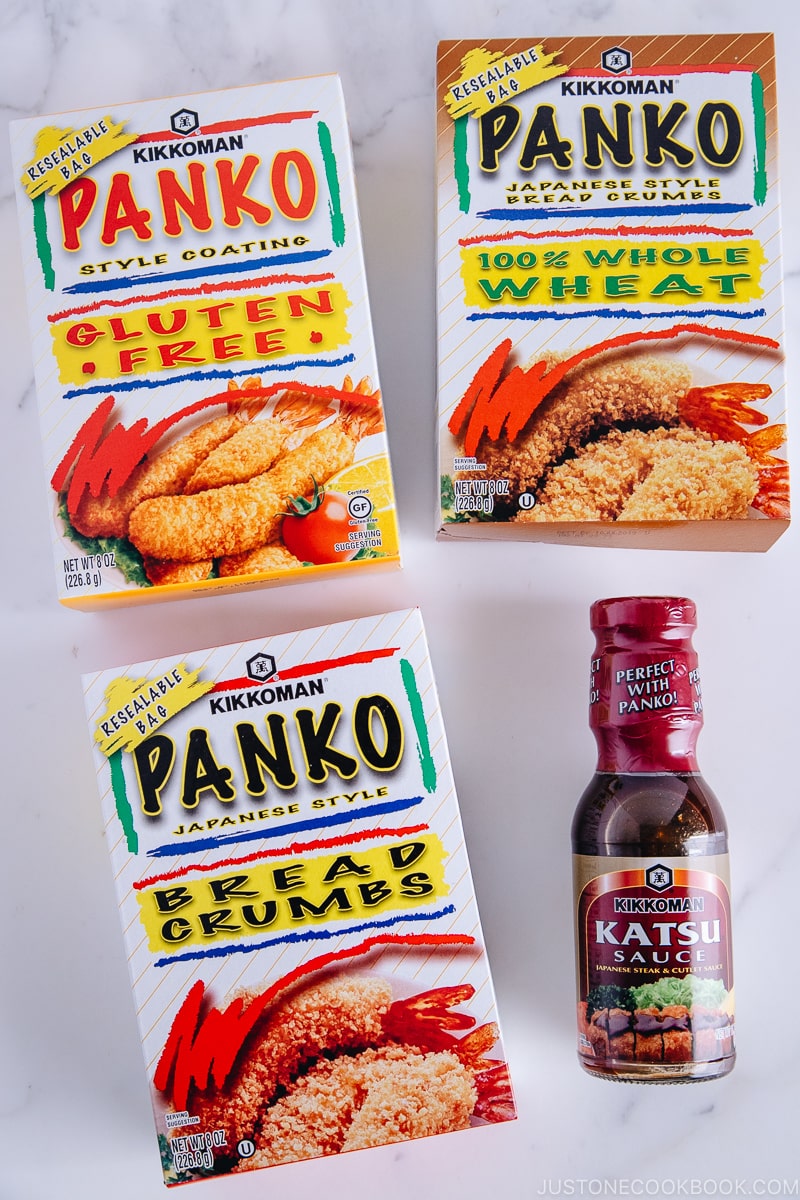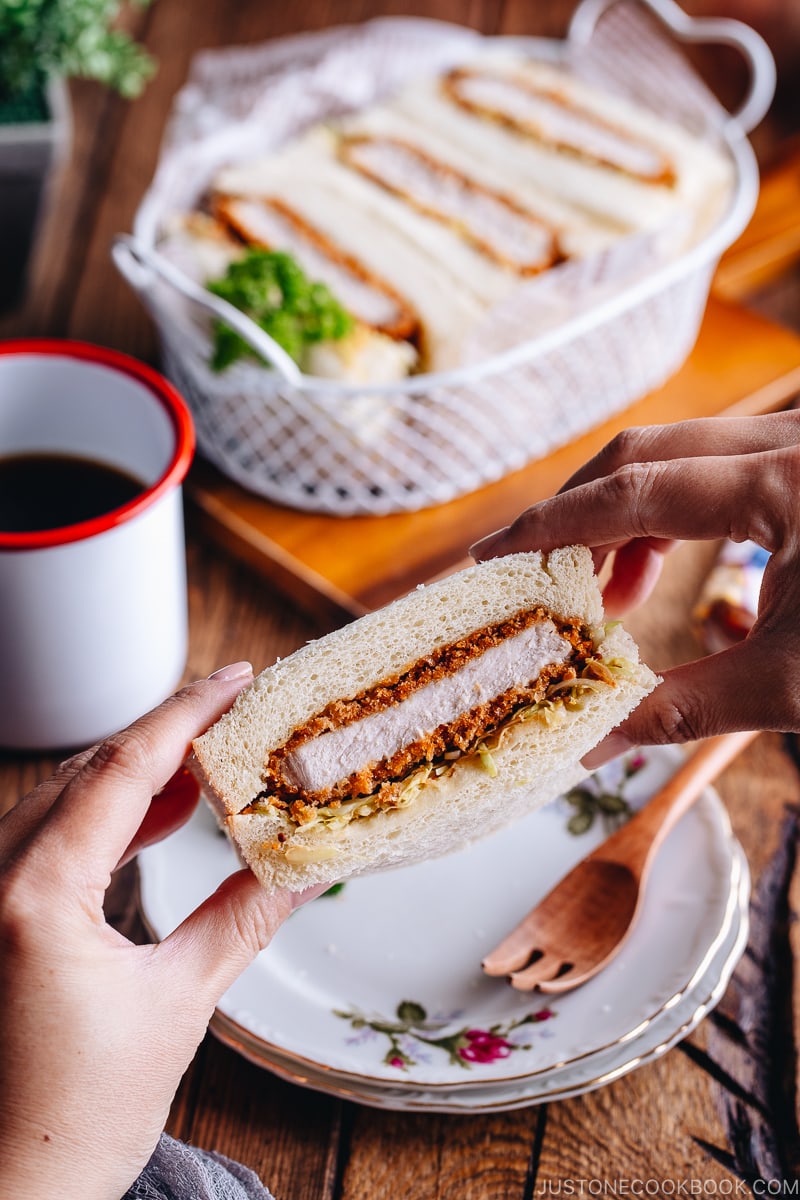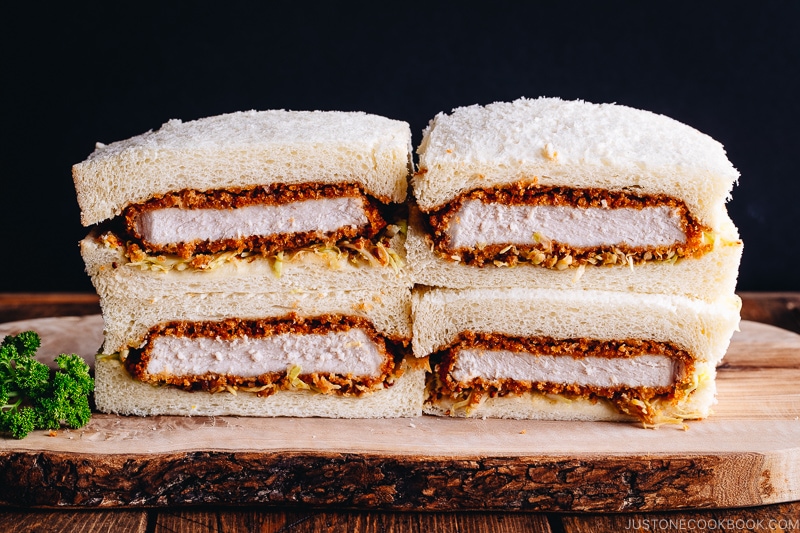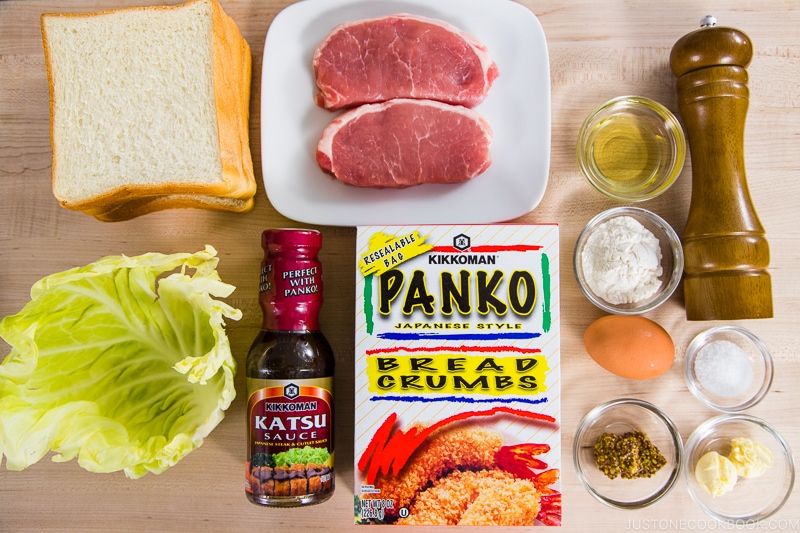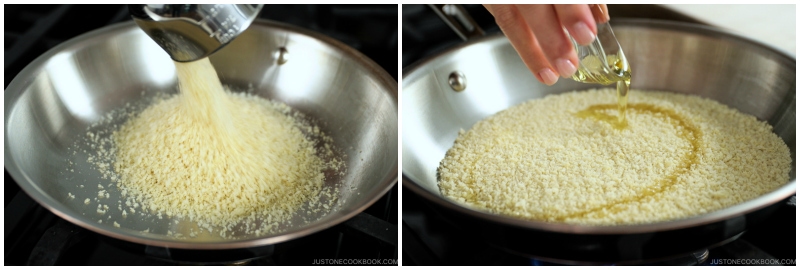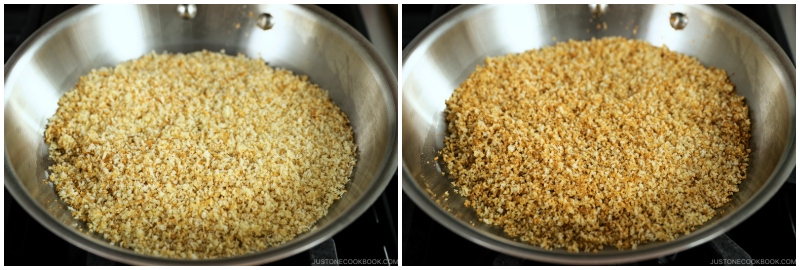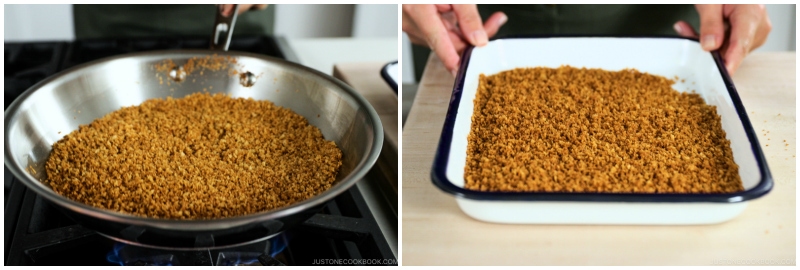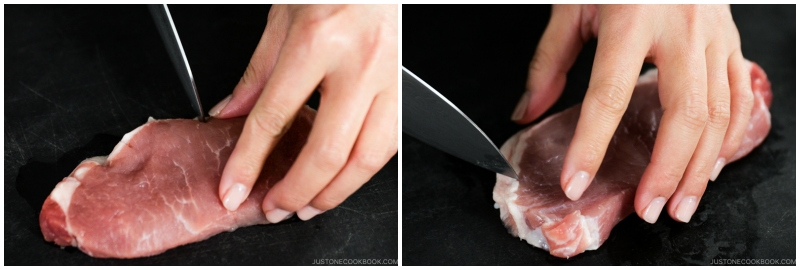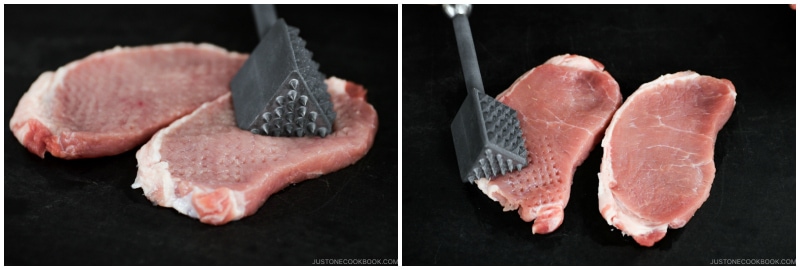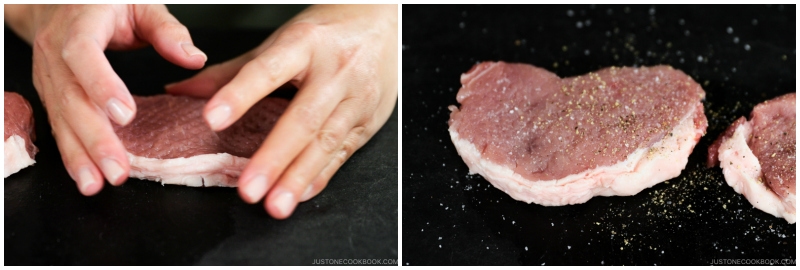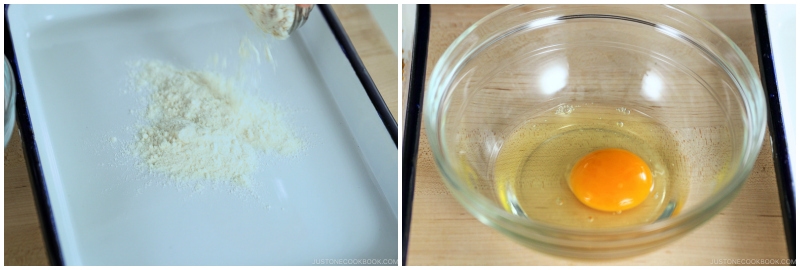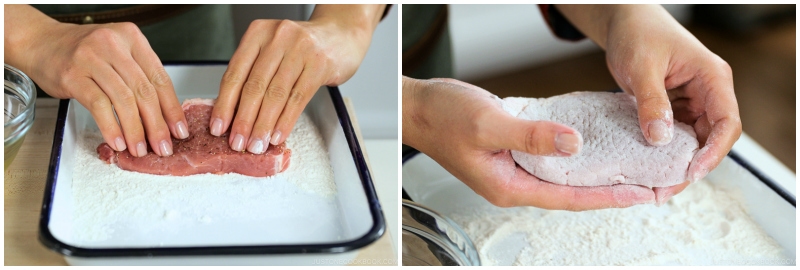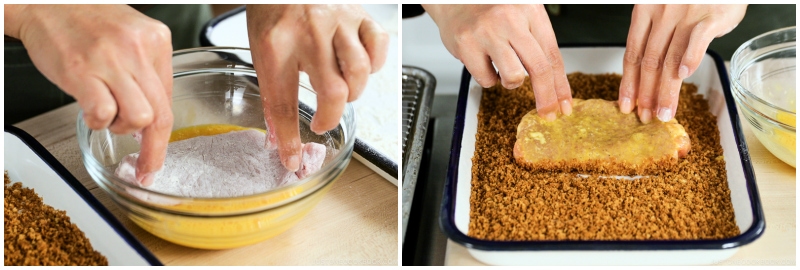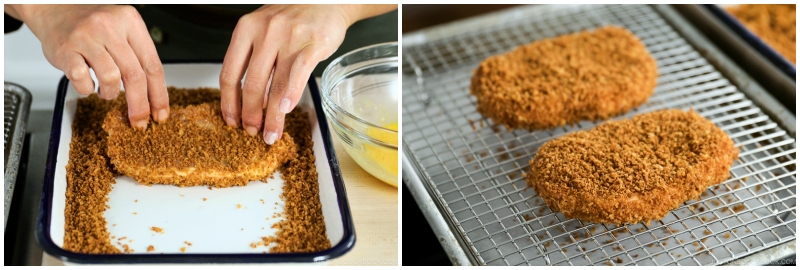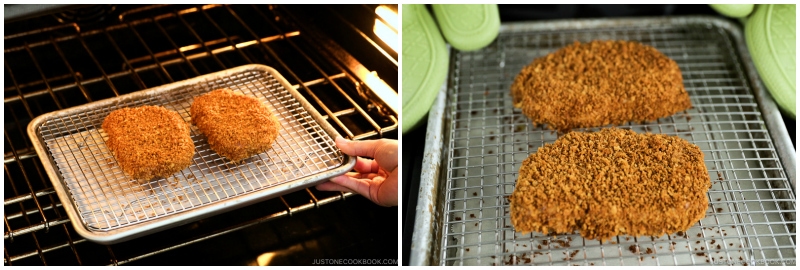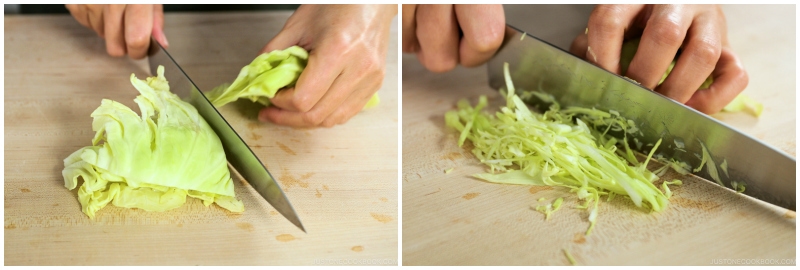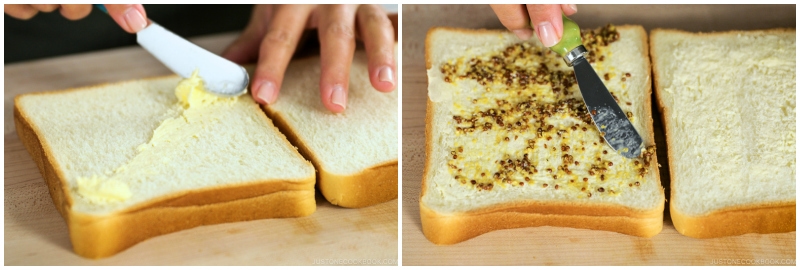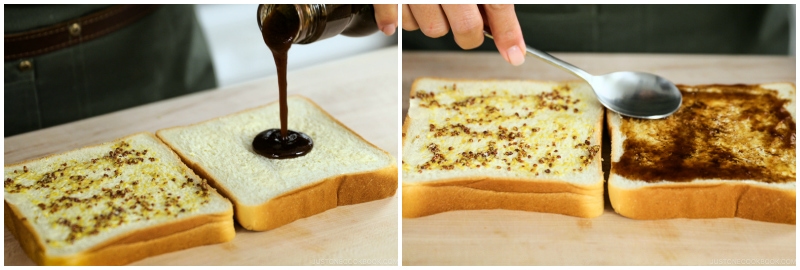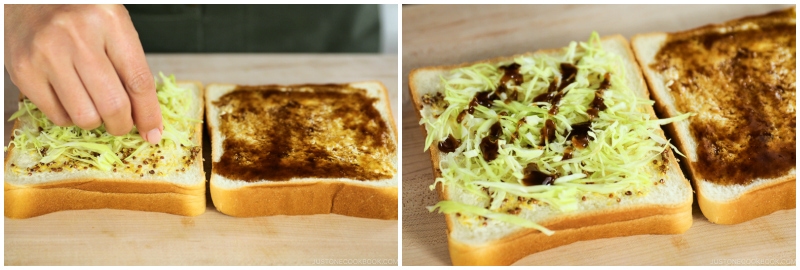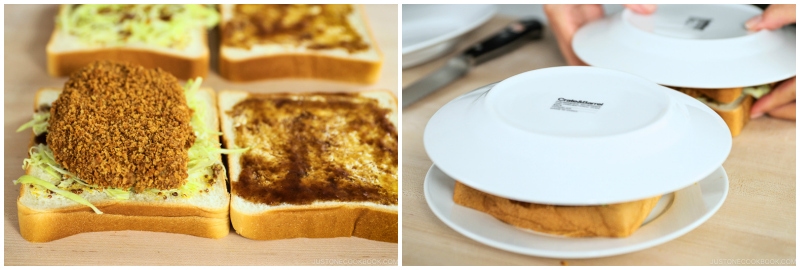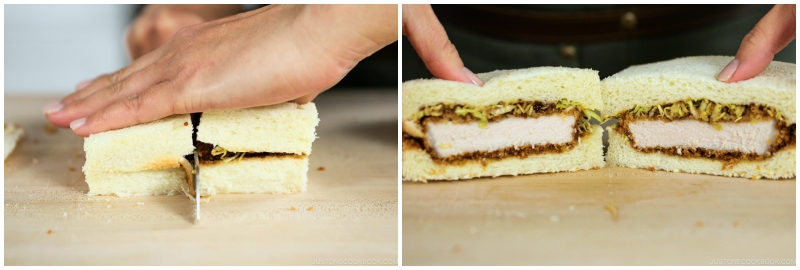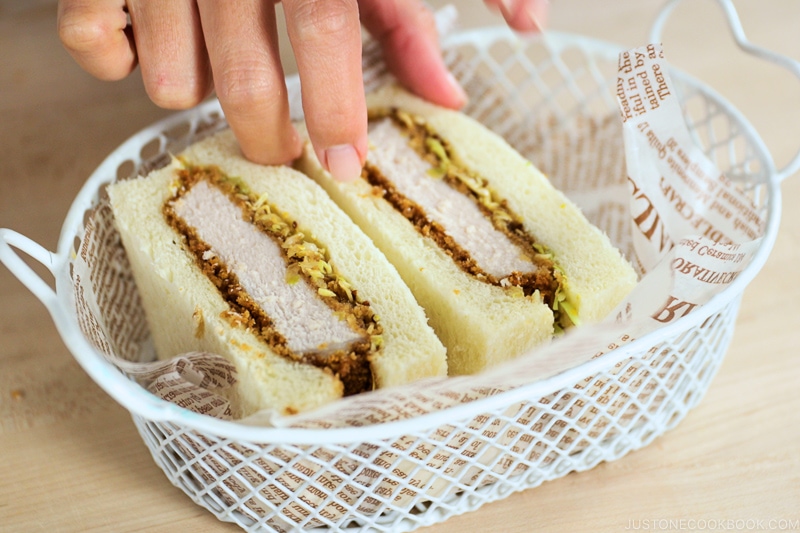You can always find fresh infusions of imagination in the art of Japanese sandwich-making. Sometimes it can be alarmingly attractive like wanpaku sandwich, and sometimes it can be down-home like this Katsu Sando recipe. Katsu sando is a thing of comfort, with its crispy meat cutlet with savory sauce sandwiched between soft white bread. Think of it like a schnitzel sandwich. It’s my husband and son’s favorite lunch choice in Japan. They pick up katsu sando from different shops at the train stations and eat them during our long trips. According to them, katsu sando is the best meal on the go.
What is Katsu Sando?
Katsu sando (カツサンド) is short for katsu sandwich (カツサンドイッチ). Sandwiches are called sando in Japan, like tamago sando (egg sandwich). For the bread, the Japanese almost always use shokupan, Japanese milk bread. This tender pullman loaf bread has a milky-sweet taste and pillowy softness that you just can’t beat. “Katsu” refers to Japanese-style pork or chicken cutlet coated with panko breadcrumbs and deep-fried till golden brown. The pork cutlet is called tonkatsu (トンカツ) and the chicken cutlet is chicken katsu (チキンカツ). They are a popular menu among yoshoku, the Western-influenced Japanese dishes.
Panko Breading Elevates Japanese Katsu
The difference from Western-style cutlets is that Japanese katsu uses panko (パン粉), the famous Japanese breadcrumbs, to coat the meat. Panko is made from bread without crusts (although some brands include crusts). The light, airy, larger flakes tend to stay crispier longer than standard breadcrumbs because they don’t absorb as much grease. They make the cutlet so much better! I know you can’t wait to bite into the crispy deep-fried katsu! But what if you don’t want to deep-fry at home? We’ll cover that next.
Baked Katsu for a Healthy Alternative
Typically, tonkatsu and chicken katsu are deep-fried to perfection. Considering the disposal of oil, a smelly and messy kitchen, and the fear of deep-frying, I know many of you wish you wouldn’t have to go through all that just to enjoy katsu. So today, I made my Katsu Sando with baked tonkatsu! If you are a fan of 100% original katsu sando, please continue with the fried pork cutlet of your liking. I personally don’t mind deep-frying if I can eat a crispy and juicy tonkatsu. However, I want to encourage EVERYONE to try this great sandwich, including those of you who want to avoid the hassle of deep-frying.
Pre-Toast the Panko for Baked Tonkatsu
My method involves pre-toasting the panko before baking. You know the drill if you have tried my Baked Tonkatsu, Baked Chicken Katsu, Baked Korokke, and Baked Salmon Katsu recipes. Toast the panko in a frying pan with a tiny bit of oil until golden brown. This will ensure you get the perfectly even-color, crispy, golden panko just like the deep-fried panko would look like. It’s easy and mess-free!
Ingredients for Katsu Sando
For the Cutlet For the Sandwich
How To Make Katsu Sando
3 Useful Tips To Make Katsu Sando
1. Don’t skip the butter.
If you want to prevent the bread from becoming soggy, it’s a must to spread butter on both sides of the bread to act as a waterproof safeguard. It doesn’t have to be a lot; even a thin layer helps!
2. Don’t skimp on tonkatsu sauce.
Tonkatsu sauce is a key flavor in Katsu Sando. I used to just put the sauce on the cutlet alone, but I learned that spreading the tonkatsu sauce on the bread and shredded cabbage makes a huge difference.
3. Put weight on the sandwich.
Make sure the tonkatsu is snug between the slices of shokupan. In Japan, putting weight on a sandwich is a standard method prior to cutting in half. You don’t want the ingredients to fall off the sandwich, so I highly recommend doing this. Since the cutlet is situated in the center, I suggest using two plates on top and bottom to keep both shokupan and tonkatsu snug from both sides.
Other Japanese Sandwiches You’ll Love
Chicken Katsu Sandwich Tamago Sando Wanpaku Sando
Wish to learn more about Japanese cooking? Sign up for our free newsletter to receive cooking tips & recipe updates! And stay in touch with me on Facebook, Pinterest, YouTube, and Instagram.
